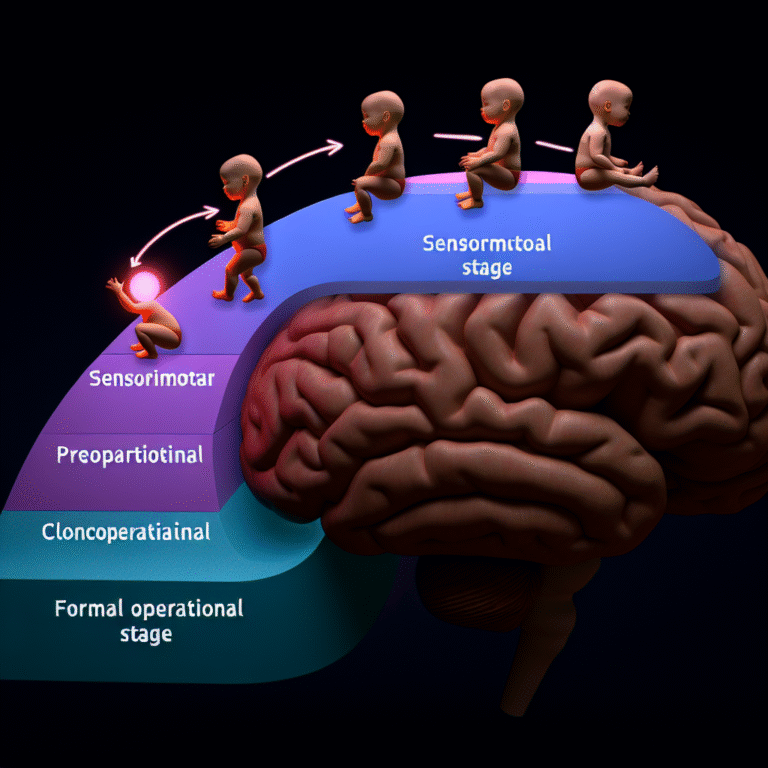
Beyond Rewards and Triggers: The Ultimate Insights into the Fundamental Differences in Conditioning Approaches
Introduction
In a world teeming with behavioral science, the conditioning approaches that guide our understanding of human behavior have evolved significantly. Conditioning is no longer just about rewards and triggers; it has branched out into a complex array of methodologies that reveal the intricacies of human motivation and behavior. The discourse surrounding conditioning often revolves around classical and operant conditioning, emphasizing rewards and triggers as the foundation. However, understanding the intricacies that lie "Beyond Rewards and Triggers: The Fundamental Differences in Conditioning Approaches" provides a more holistic view of behavioral science and real-world applications.
This article will delve deep into the rich tapestry of conditioning theories, exploring the varied approaches that extend beyond the simple paradigms of rewards and triggers. We will illustrate these concepts with compelling case studies, insightful charts, and actionable takeaways. By the end of this article, you will not only grasp the fundamental differences in conditioning approaches but also appreciate their application in everyday life and various fields.
The Evolution of Conditioning Theories
Classical Conditioning: The Power of Associations
Classical conditioning, famously illustrated by Pavlov’s experiments with dogs, demonstrates how subjects learn to associate a neutral stimulus with an unconditioned stimulus, leading to a conditioned response. In this method, the focus is predominantly on involuntary reactions.
Example: A classic scenario involves a sound being played before food is presented to dogs. Over time, the dogs begin to salivate merely at the sound, having learned to anticipate food.
Operant Conditioning: The Role of Reinforcement
Operant conditioning, pioneered by B.F. Skinner, diverges from classical conditioning by focusing on voluntary behaviors. Here, behavior is influenced by the consequences that follow. Rewards (reinforcements) encourage behavior, while punishment reduces its occurrence.
Example: In a school setting, a teacher rewards students with praise or extra recess time for on-task behavior, reinforcing their engagement.
Beyond Rewards and Triggers
Despite the profound insights provided by classical and operant conditioning, behavioral science has expanded to include additional approaches. These paradigms recognize that human motivation is multifaceted, relying on context, intrinsic drives, and social factors.
The Spectrum of Conditioning Approaches
1. Cognitive Learning Theory
Cognitive learning expands on the limitations of traditional conditioning by incorporating mental processes into the mix.
Key Insights:
- Cognitive learning posits that individuals actively process and organize information rather than passively reacting to stimuli.
- Short-term memory, problem-solving abilities, and social interactions play crucial roles.
Case Study:
In a corporate training environment, companies that focus only on rewards and punishments often see minimal engagement among employees. In contrast, organizations employing cognitive learning strategies—such as collaborative projects and brainstorming sessions—experience increased creativity and problem-solving.
2. Social Learning Theory
Albert Bandura’s Social Learning Theory emphasizes observation and modeling as key components of learning.
Key Insights:
- Individuals learn not only through direct experience but also by observing the consequences of others’ behavior.
- The concepts of self-efficacy and the belief in one’s capabilities significantly influence motivation.
Case Study:
In youth development programs, mentors who model desirable behaviors create an environment where young people are motivated to mimic positive actions—going beyond simple rewards for compliance.
Table 1: Comparison of Conditioning Approaches
| Approach | Focus | Key Mechanism |
|---|---|---|
| Classical Conditioning | Involuntary responses | Association of stimuli |
| Operant Conditioning | Voluntary behavior | Reinforcement and punishment |
| Cognitive Learning | Mental processes | Information processing |
| Social Learning | Observation and modeling | Learning from the experiences of others |
3. Constructivist Approach
Constructivism operates on the premise that learners construct their understanding and knowledge of the world through experiences and reflecting on those experiences.
Key Insights:
- Learner-centered environments emphasize exploration and discovery, making learning more meaningful.
- Engaging learners in hands-on activities allows them to form personal connections with the material.
Case Study:
In Montessori schools, children engage in self-directed activities, aiding their intrinsic motivation without relying solely on rewards. This approach fosters a love for learning, encapsulating the concept of "Beyond Rewards and Triggers: The Fundamental Differences in Conditioning Approaches."
4. Behavioral Economics
Behavioral economics merges psychology and economic theory to understand why people make certain choices.
Key Insights:
- Factors such as cognitive biases, heuristics, and social influences shape decision-making.
- This approach investigates how people behave in economic contexts rather than predicting behavior through rational models alone.
Case Study:
Nudging is a behavioral economics strategy where subtle policy shifts encourage better choices. For instance, changing the layout of a cafeteria to promote healthier food options exemplifies a shift in behavioral understanding beyond standard rewards.
The Impact of Conditioning Approaches in the Real World
Education Systems
The traditional educational model often leans heavily on rewards and punishments. As educational institutions begin to embrace more comprehensive conditioning theories, they develop programs that promote critical thinking, collaboration, and emotional intelligence. A case in point is the integration of SEL (Social Emotional Learning), which cultivates self-awareness and responsible decision-making, encouraging students to engage in their learning processes.
Workplace Dynamics
In the corporate arena, understanding "Beyond Rewards and Triggers: The Fundamental Differences in Conditioning Approaches" is vital for enhancing employee engagement and motivation. Organizations that adopt a hybrid of conditioning techniques that focus on intrinsic motivations often find greater employee satisfaction and productivity. For example, Google’s famous 20% time allows employees to pursue passion projects, resulting in employee-driven innovation that transcends traditional reward-based systems.
Health and well-being
In behavioral health, focusing solely on rewards (e.g., check-ins and incentives for attending sessions) may not lead to sustainable behavior change. Incorporating techniques from cognitive behavioral therapy, such as self-monitoring and self-reflection, encourages patients to adopt healthier habits over time, emphasizing the need for context and individual experience.
Conclusion
As we unravel the complexities and layers of conditioning approaches, we come to understand that the straightforward paradigms of rewards and triggers provide only a glimpse into human behavior. The exploration "Beyond Rewards and Triggers: The Fundamental Differences in Conditioning Approaches" highlights the multifaceted nature of motivation and learning.
By embracing a more comprehensive understanding that incorporates cognitive, social, and emotional influences, we can enhance our educational systems, workplace dynamics, and approaches to health and well-being. To inspire real change, we must be willing to explore beyond the surface, recognizing the powerful role context, experience, and intrinsic motivation play in shaping the human experience.
FAQs
1. How do cognitive learning theories differ from traditional conditioning approaches?
Cognitive learning theories incorporate mental processes, suggesting that understanding and knowledge are actively constructed by learners rather than passively responded to through conditioning.
2. What is an example of a real-world application of social learning theory?
Mentorship programs that encourage young people to model positive behaviors exhibited by their mentors illustrate the principles of social learning theory effectively.
3. How can organizations implement constructivist approaches?
Organizations can foster a constructivist environment by allowing employees to engage in exploratory projects, emphasizing hands-on learning, and encouraging collaboration.
4. What is nudging in behavioral economics?
Nudging refers to subtle policy changes that guide individuals toward making better choices without removing their freedom to choose, based on an understanding of human behavior.
5. Why is understanding different conditioning approaches important?
Understanding the variety of conditioning approaches enhances our ability to motivate and engage individuals in various contexts, enabling more effective educational practices, workplace cultures, and health interventions.
By acknowledging the nuances inherent in conditioning approaches, we can strive to implement models that engage more profoundly and sustainably with the human experience. Let this be an invitation to investigate and apply insights that go beyond outdated paradigms. Embrace the multifaceted nature of conditioning for transformative outcomes in every realm of life.
















